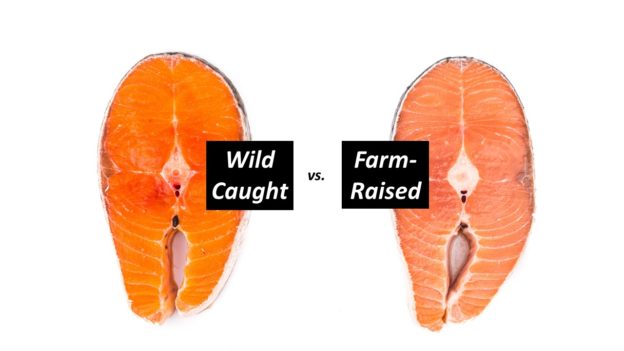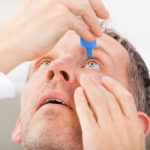By David Blyweiss, M.D., Advanced Natural Wellness
August 31, 2018
- Never buy farm-raised salmon again
- How many toxic chemicals are in your store-bought salmon fillet?
- Selecting the healthiest and freshest salmon for your family
When it comes to choosing healthy fish, one of my top recommendations is wild-caught Alaskan salmon. It has a mild taste and meaty texture that makes it an easy fish for people to like. Plus, it tends to stay moist and tender once it’s cooked up.
However, I often find that when patients can’t locate wild-caught Alaskan salmon at the supermarket fish counter, they frequently opt for the more readily available farm-raised salmon. After all, salmon is salmon, right?
Not exactly.
When you buy farm-raised fish, you’re buying a lot more than a piece of fish. You’re also investing in some pretty nasty chemicals, antibiotics and other compounds that have no place in our food supply.
In particular, salmon in supermarkets across the US often contain polybrominated diphenyl ethers – or PBDEs. These are toxic industrial chemicals that were used as flame retardants in plastics and electronics for years. PBDEs can alter brain function and behavior, damage your DNA, affect thyroid function, and act as endocrine disruptors.
Although PBDEs were banned back in 2004 because of environmental and public health concerns, it turns out that they are commonly found in the feed used for farmed fish – even if the fish are raised in an otherwise clean and well-regulated environment.
In fact, when it comes to large amounts PBDE found in salmon, contaminated feed may be thousands of times more significant than the location of the farm itself.
How Many Toxic Chemicals are in Farm-Raised Salmon?
In addition to PBDEs, farm-raised salmon also contain enormous amounts of polychlorinated biphenyls (PCBs). This is another type of industrial chemical that was once used in the electronics industry. And farm-raised salmon can contain as much as 16 times more PCBs than wild-caught.
As these accumulate in your body, they can open you up to liver cancer, thyroid problems, a weakened immune response and hormone imbalances. There is also evidence they increase the risk of type 2 diabetes, obesity and high blood pressure.
At the same time, farm-raised fish are packed together in tanks, pens and enclosures. So, parasites, viruses and disease are all big concerns. This means fish farmers have to keep them healthy with the liberal use of antibiotics, fungicides and pesticides.
In other words, every time you eat a piece of farm-raised salmon, you’re getting a great big dose of all these toxic chemicals.
Are You Suffering From...
- Love handles and a pot belly
- Romance that isn't what it used to
- Forgetfulness and inattention
- Low (or no) strength and endurance
- A sex drive that's shifted into neutral...or worse
If so...you may have Mature Male Burnout. Click here to discover more about this unique condition and what you can do about it.
Choosing the Healthiest and Freshest Salmon for You and Your Family
I don’t want to scare you away from eating salmon and other fish. There are too many great health benefits that you can get from it. Salmon, in particular, has an amazing omega-3 profile that helps slash inflammation, protect your heart, boost your brain power, fight off depression and much, much more.
And you won’t believe how easy it is to select a nice, fresh cut of wild-caught Alaskan salmon.
One of the first things you should do when purchasing your wild-caught salmon is give it the “sniff” test. It shouldn’t smell fishy. Instead, the odor should carry a faint, ocean-like smell.
When you look at it, it should be moist and plump. (If it looks dry or mushy, don’t buy it.) Fillets should be a nice, vibrant reddish/coral color without any curling or browning of the skin.
If you’re buying the whole fish, don’t buy any salmon that shows signs of browning or bruising. Also, give the eyes a good, hard look. They should be bright and shiny… not dull, cloudy or sunken. It’s also a good idea to check the firmness of the flesh… it should be resistant to light pressure and bounce back easily once depressed.
SOURCES:
University of Pittsburgh. “Livestock feed accurately predicts toxic chemicals in food.” ScienceDaily. July 2018.
Ng CA, et al. Polybrominated Diphenyl Ether (PBDE) Accumulation in Farmed Salmon Evaluated Using a Dynamic Sea-Cage Production Model. Environmental Science & Technology, 2018; 52 (12): 6965.
Genuis SK, et al. Human Excretion of Polybrominated Diphenyl Ether Flame Retardants: Blood, Urine, and Sweat Study. Biomed Res Int. 2017; 2017: 3676089.
PCBs in farmed salmon. Environmental Working Group. Jul 2003.
Crinnion WJ. The role of persistent organic pollutants in the worldwide epidemic of type 2 diabetes mellitus and the possible connection to Farmed Atlantic Salmon (Salmo salar). Altern Med Rev. 2011 Dec;16(4):301-13.
Crinnion WJ. Polychlorinated biphenyls: persistent pollutants with immunological, neurological, and endocrinological consequences. Altern Med Rev. 2011 Mar;16(1):5-13.






